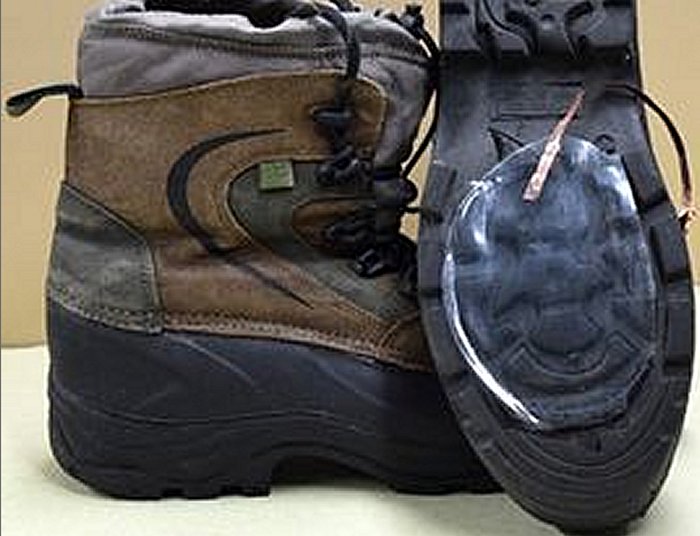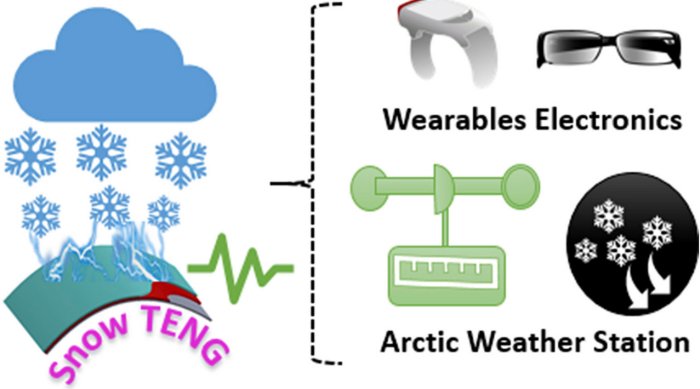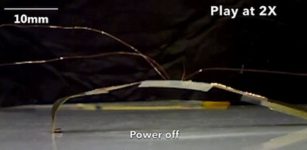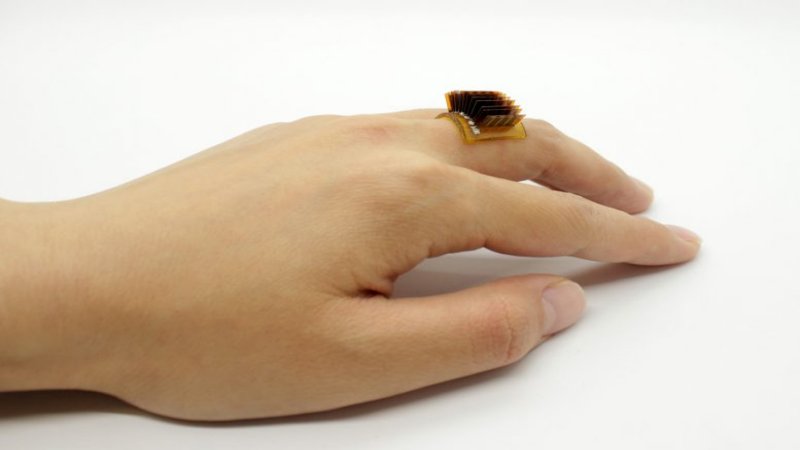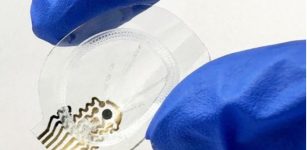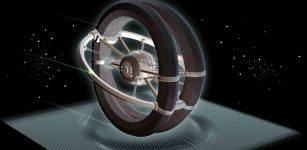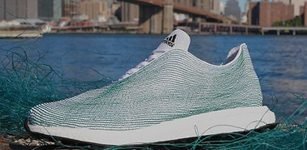Smart, Small, Cheap Device Produces Electricity From Falling Snow
Eddie Gonzales Jr. – MessageToEagle.com – A new – the first of its kind – device that creates electricity from falling snow, have been designed by researchers from the University of California, Los Angeles (UCLA).
The device is small, inexpensive, thin and flexible like a sheet of plastic.
Boot with device “TENG” – attached. Image credit: A. Ahmed – UCLA
“The device can work in remote areas because it provides its own power and does not need batteries,” said senior author Richard Kaner from the University of California, Los Angeles (UCLA) said in a press release.
“It’s a very clever device — a weather station that can tell you how much snow is falling, the direction the snow is falling, and the direction and speed of the wind.”
The device called TENG (a snow-based triboelectric nanogenerator), generates charge through static electricity, produces energy from the exchange of electrons.
“Static electricity occurs from the interaction of one material that captures electrons and another that gives up electrons,” said Kaner,
“You separate the charges and create electricity out of essentially nothing.”
Snow is positively charged and gives up electrons. Silicone — a synthetic rubber-like material that is composed of silicon atoms and oxygen atoms, combined with carbon, hydrogen and other elements — is negatively charged.
When falling snow contacts the surface of silicone, that produces a charge that the device captures, creating electricity.
“Snow is already charged, so we thought, why not bring another material with the opposite charge and extract the charge to create electricity?” said co-author Maher El-Kady, a UCLA assistant researcher of chemistry and biochemistry.
Drawing credit: UCLA
“While snow likes to give up electrons, the performance of the device depends on the efficiency of the other material at extracting these electrons,” he added. “After testing a large number of materials including aluminum foils and Teflon, we found that silicone produces more charge than any other material.”
The accumulation of snow reduces the amount of sunlight that reaches the solar array, limiting the panels’ power output and rendering them less effective.
The new device could be integrated into solar panels to provide a continuous power supply when it snows. The device can be used for monitoring winter sports, such as skiing, to more precisely assess and improve an athlete’s performance when running, walking or jumping, Kaner said. It also has the potential for identifying the main movement patterns used in cross-country skiing, which cannot be detected with a smart watch.
It can also send signals, indicating whether a person is moving. It can tell when a person is walking, running, jumping or marching.
The research team used 3-D printing to design the device, which has a layer of silicone and an electrode to capture the charge. The device could be produced at low cost given “the ease of fabrication and the availability of silicone,” Kaner said.
Written by Eddie Gonzales Jr. – MessageToEagle.com Staff Writer

